How to grow snowdrops
The Basics
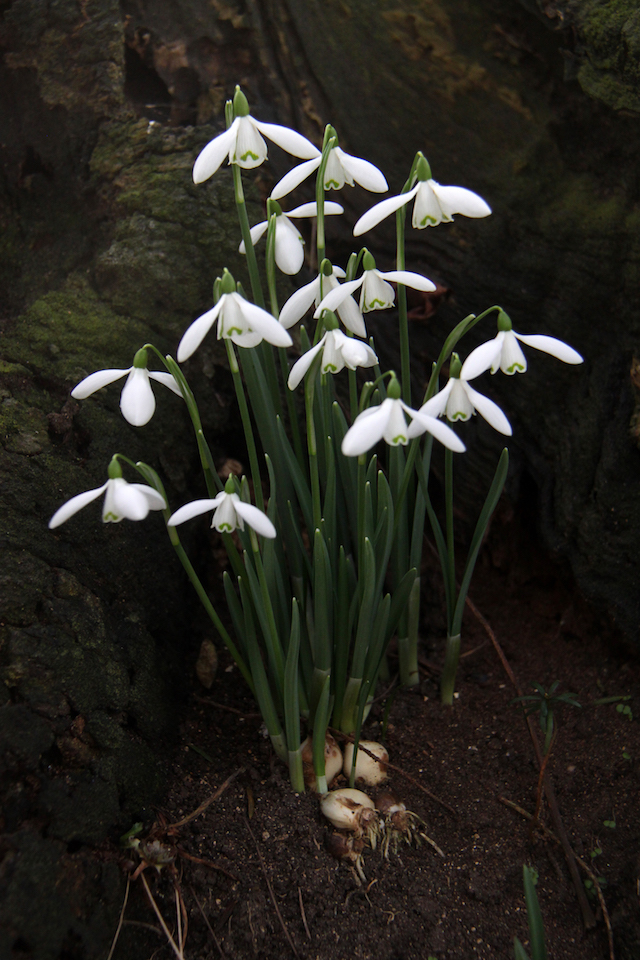
Snowdrops grow from a bulb. They have a small white flower (almost always just one to a stem) and strappy green leaves. They grow to 4″-8″ high.
When you start growing snowdrops, the two forms you are most likely to come across are Galanthus nivalis (the single snowdrop – with just 3 interior petals) and Galanthus nivalis f. pleniflorus ‘Flore Pleno’ (the double snowdrop -packed with interior petals.) If you see snowdrops flowering in January, with big leaves and flowers, they are probably a species called Galanthus elwesii.
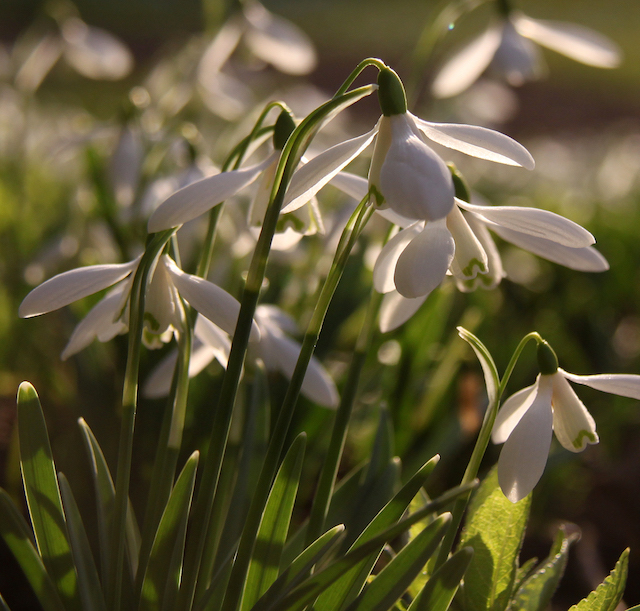
Galanthus nivalis. The common snowdrop.
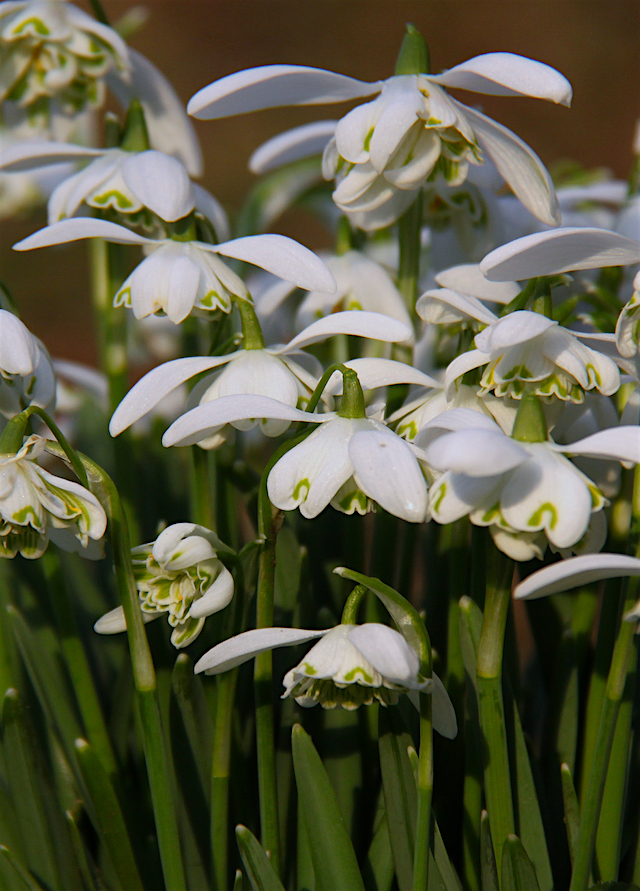
Galanthus nivalis f. floreplenus ‘Flore Pleno’. The double snowdrop
The majority of snowdrops flower in February. This is when you will see them in churchyards, on the side of the road or nestling under hedges. They have become semi-naturalised in the UK spreading out from gardens and even rubbish dumps (where a bulb has been thrown out.)
It’s worth considering growing snowdrops for their scent. In order to attract the few insects on the wing in February, the flowers need to send a very strong signal that they are here, so they are scented. The common snowdrop, Galanthus nivalis, has a honey scent that is delicious on a sunny day; you can cut the flowers and put them in a posy vase to appreciate them in a warm house.
When and where to buy snowdrops
Traditionally you should order your bulbs ‘in the green’ for delivery in March. This means they arrive after the plant has flowered but while the leaves are still green.
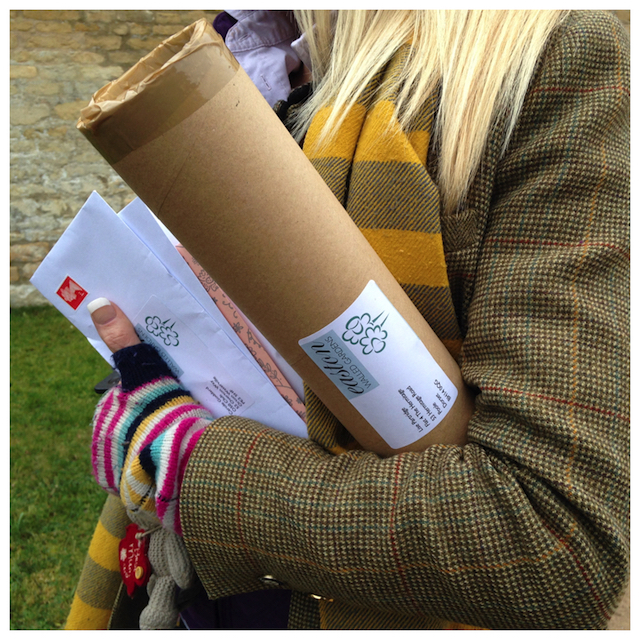
Mail order companies will deliver hundreds of the common varieties for amazing value or you can order just one bulb and pay hundreds of pounds.The RHS regional shows and specialist snowdrop events are excellent places to find and order unusual snowdrop bulbs.
Visit gardens in February, including those open just for snowdrops, where you will find a range of spring bulbs for sale. Wikipedia offers a good place to start looking for snowdrop gardens to visit.
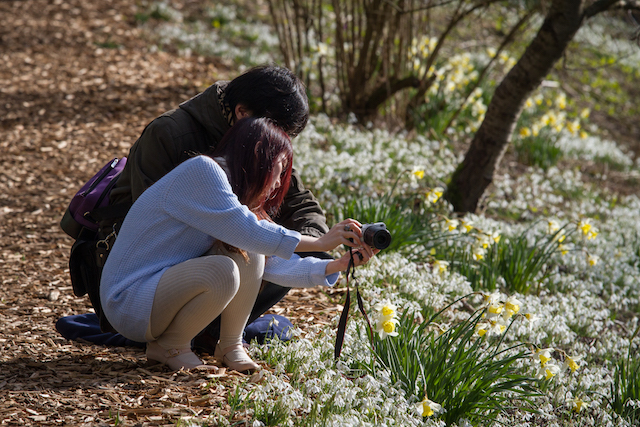
Positioning your bulbs
Snowdrops will flower under hedges, in short grass, in containers and in flower beds. Anywhere not too dry and where the winter light catches them; they will flower. Think about where you have seen snowdrops growing in other gardens or in the countryside. This will give you an idea as to the kind of soil, aspect and other conditions that they need to grow. In a small garden, plant them under a twiggy shrub.
Looking after your snowdrops
Plant your snowdrops in good friable soil and add plenty of sand or grit to help with drainage if you garden on a clay (sticky) soil. Plant them deeply, allowing only the green part of the leaves to show above ground.
The leaves are important as they will be out from January to April and will gather energy from the sun to take back into the bulb for next year’s flowers. This means that, after flowering, you need to leave the leaves alone. They will wither and die back by May and the bulb will now just sit and do nothing until Autumn when the process starts again.
You can plant summer flowering perennials in the empty space; the bulbs won’t mind. They are very relaxed about the roots of other plants and may even grow through them in the spring.
Once you have one or two bulbs, they will start to form more bulbs underground. By lifting (ie digging up) the bulbs in the spring (after they have flowered but while the leaves are still green) and splitting them into individual bulbs and replanting separately, you will never have to buy another snowdrop!
Feeding and aftercare
If snowdrops are happy, very little care is needed. One of the best conditioners for the soil and your snowdrops is the leaf litter that falls from the trees above every year. In containers, you can imitate this by scraping off the top few centimetres and applying a new layer of compost.
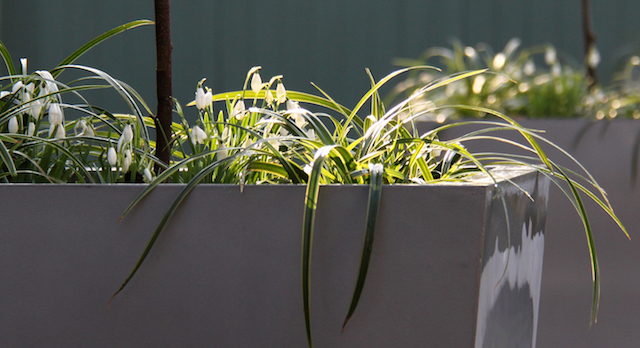
If your soil is hungry, you can help to boost your snowdrops’ performance by applying a slow release fertiliser in autumn and gently forking it in to the soil. Obviously, once the shoots appear this is much harder to do. Splitting the bulbs to prevent congestion will also improve the number of flowers in a clump.
Using snowdrops with other plants
Our garden is full of ideas for using snowdrops in containers or large drifts. See my blog post here on snowdrop planting combinations.